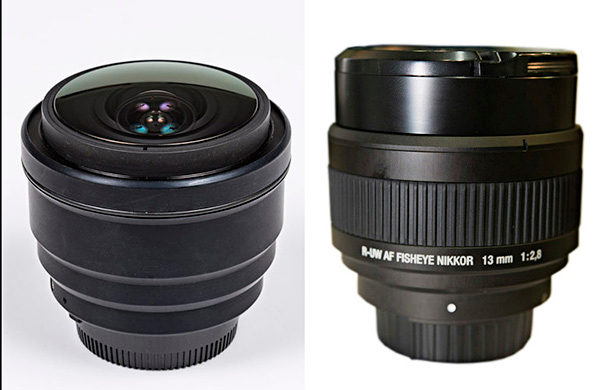Insight: The Nikonos RS 13mm conversion
Nikonos RS R-UW AF 13mm f2.8 lens.
An adaptation to modern digital Nikon cameras in a Seacam housing and a review of the lens.
By Borut Furlan.
Introduction
The underwater Nikonos RS R-UW AF 13mm f2.8 Fisheye lens was, in the days of film cameras, known as the epitome of optical excellence in underwater wide-angle photography. However, in the era of modern digital cameras, no one considers using the out-dated film Nikonos RS camera. In addition, Nikon shows absolutely no interest in producing a digital version of the once famous Nikonos RS, thus making these excellent underwater lenses obsolete.
When it was released, the RS system was astronomically expensive and hence buyers were scarce and Nikon withdrew it from their production program in 1996 after only 4 years.
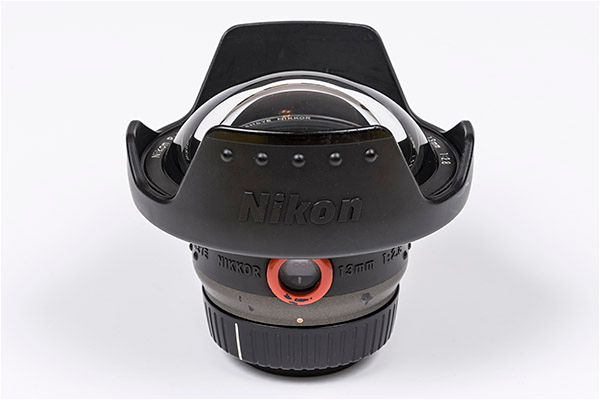
The adaptation of the underwater Nikonos RS R-UW 13mm f2.8 lens to function with modern digital Nikon camera has already been described in the recent past, but the solution employed a special adapter which connects three different units to each other: The lens, the camera and the underwater housing. Here, however, I see the following issues:
- The Nikonos lenses were designed for rugged underwater cameras. By adding an adapter to the system, there is a possibility that a hydrostatic pressure could affect a much more delicate modern digital camera and could thereby hinder its operation or even damage it.
- In the case of minor defects on the O-ring between the adapter and the lens, the adapter would be in a function of a funnel, which means it would be leading water directly to the camera and would consequently destroy it. In the case of minor defects on the O-ring of the dome port, only a little water would be accumulated at the bottom of the underwater housing and would thus keep the camera dry and undamaged.
- Mounting the lens and the adapter is more time consuming and more complicated than the installation of conventional ports.
- In the case of Seacam underwater housing (for D800), zoom gears, manual focus gears, and lens release levers should be removed in order to insert the adapter. This means that some important housing functions would be lost. Removing the RS lens from the camera would be particularly awkward as the adapter prevents finger access to the lens release button, which would therefore make it necessary to open the housing back-cover and press the button from behind.
For this reason I decided to tackle the project from the beginning and with a completely new approach.
The Project.
First of all, I looked for the Nikon original patent (I’ve found the US version, which is filed under U.S. 5579169) and studied the structure of the lens. It should be highlighted that the patent was filed only on 12/09/1994, entering in force on 26/11/1996, at a time when the lens has already been withdrawn from the production line. Another interesting fact is that the patent describes three different lenses:
| Focal Length | Aperture | Viewing Angle |
|---|---|---|
| 12.32mm | 2.87 | 170.6° |
| 12.49mm | 2.85 | 180.0° |
| 12.10mm | 2.85 |
The lens we are talking about (and the only one that came into regular production) is the first one.
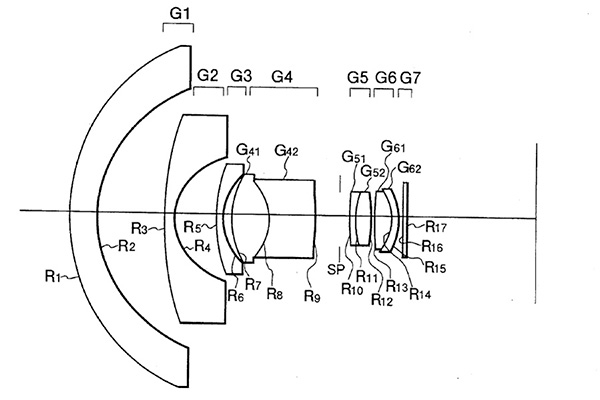
The scheme from the Nikon’s original patent:
It is necessary to clarify Nikon’s nomenclature in the expression “focal length” of underwater lenses. The term comes already from the times of the French camera Calypso (invented by Jean de Wouters), for which Nikon purchased a license in 1963 and had begun to produce its Nikonos series. Then, the original 35 mm amphibian lens had approximately the same underwater viewing angle as the 50 mm land lens had on surface. When Nikon produced the first underwater-only lens (28mm f/3.5), it was marked “28mm”, although the underwater viewing angle was similar to the 35 mm land lens. To obtain the real focal length, which gives us the right information of the viewing angle, the nominal focal length must be multiplied by a factor of 1.33 (the refractive index of water). Since this nomenclature was implemented by Nikon for the RS series lenses as well, the real focal lengths are as follows: 17 mm (for 13/2.8), 27-47 mm (for 20-35/2.8), 37 mm (for 28/2.8) and 67 mm (for 50/2.8).
I purchased my lens in Italy – today these lenses are quite rare and expensive. As I dismantled it I realised that the entire internal group of lenses, when focusing, is moved back and forth with respect to the camera and the first lens element, which acts like a mini dome port. The latter remains static at all times with respect to the camera, exactly the same as the dome port when the camera is in an underwater housing.
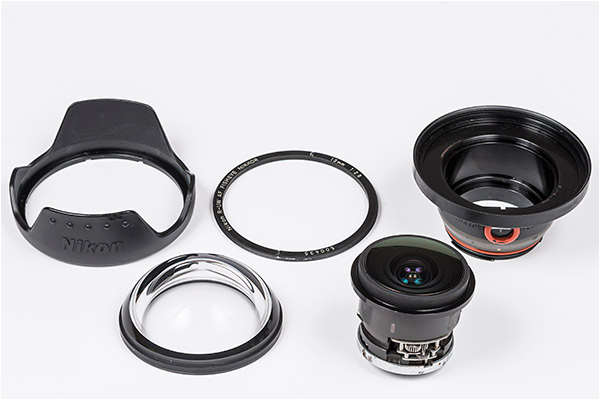
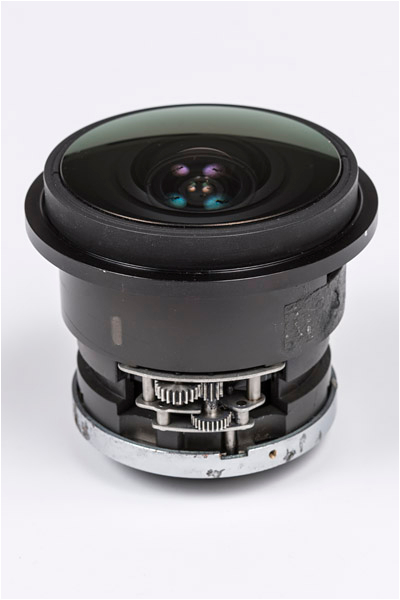
That is when I first got the idea to split this lens into two components! On the basis of the patent data and by measuring the internal dimensions of the lens housing I calculated the distance between the front lens element and the inner group of lenses. I constructed an aluminium ring with a Seacam thread for the front lens element. I even used the original Nikonos plastic lens hood and a ring around the front lens element with a serial number of the lens. I also constructed a new housing for the internal group of lenses. As a result, I got a new lens and a dome port, which operate properly only when they are placed together.
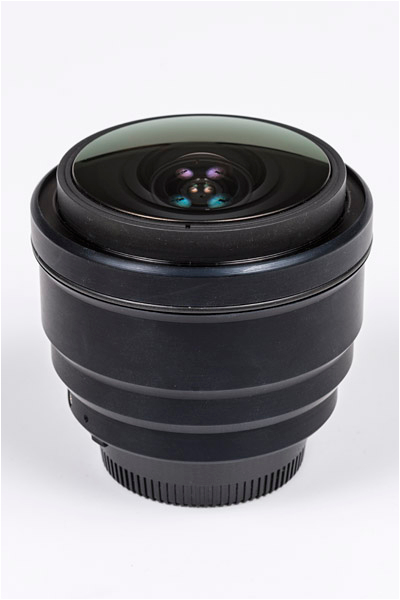
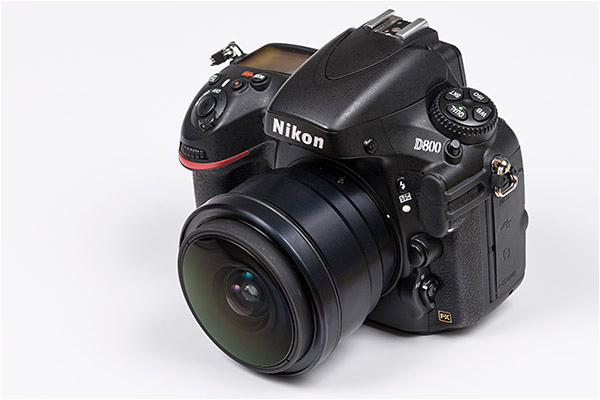
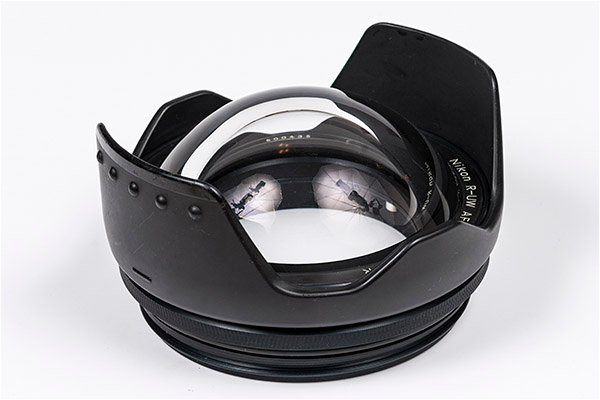
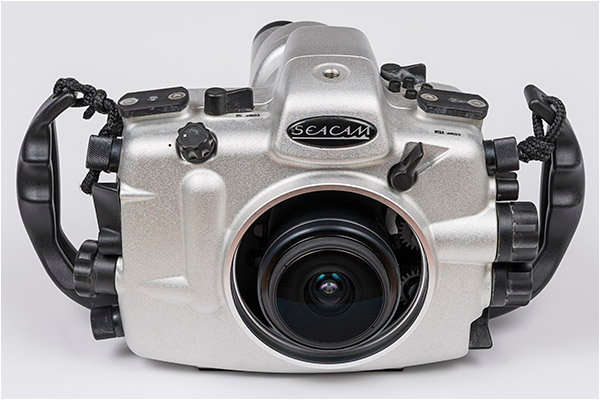
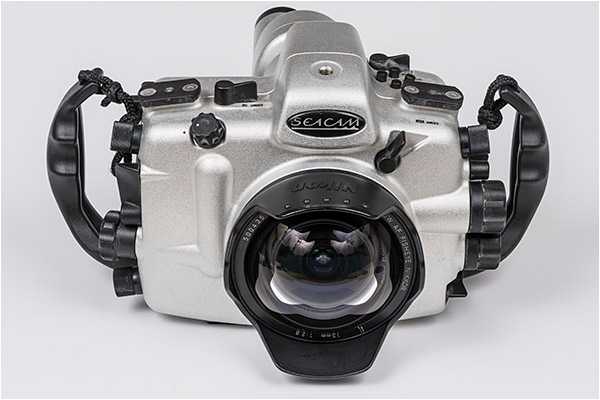
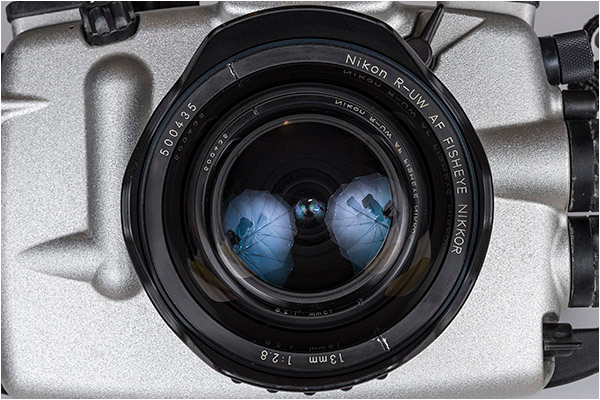
This was then followed by electronic lens conversion. There are several different options on how to convince a lens and a camera to recognise each other. One possible solution is to replace the electronic circuit with a circuit of a similar but more modern lens. Of course, this is no easy task, so I was forced to find out certain tricks before everything started to work. The camera eventually recognised the lens and all functions worked perfectly (autofocus, aperture stopping down, all four exposure modes and all three metering modes), at least they seemed to.
Benefits of my version of adapting the lens are mainly the following:
- There is no need to remove some parts from the underwater housing and thereby functionally limit it.
- Installing and removing the lens is much simpler.
- The hydrostatic pressure can’t have impact on the camera in any way and thereby can’t affect its performance or even damage it.
- There is practically no depth limit. Since the front lens element is relatively small and very thick (at the thinnest point in the middle is 8 mm thick), it would withstand a depth of several hundred meters.
Since I personally had no commercial interest in this project – though it would also be a pity that other photographers wouldn’t benefit from it – I presented my idea to Harald Hordosch, the owner of Seacam. We have known each other for almost 20 years and have also collaborated several times in the past. He was very enthusiastic about the idea and soon began working on this project.
